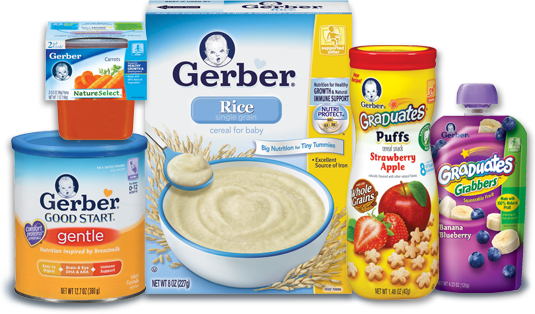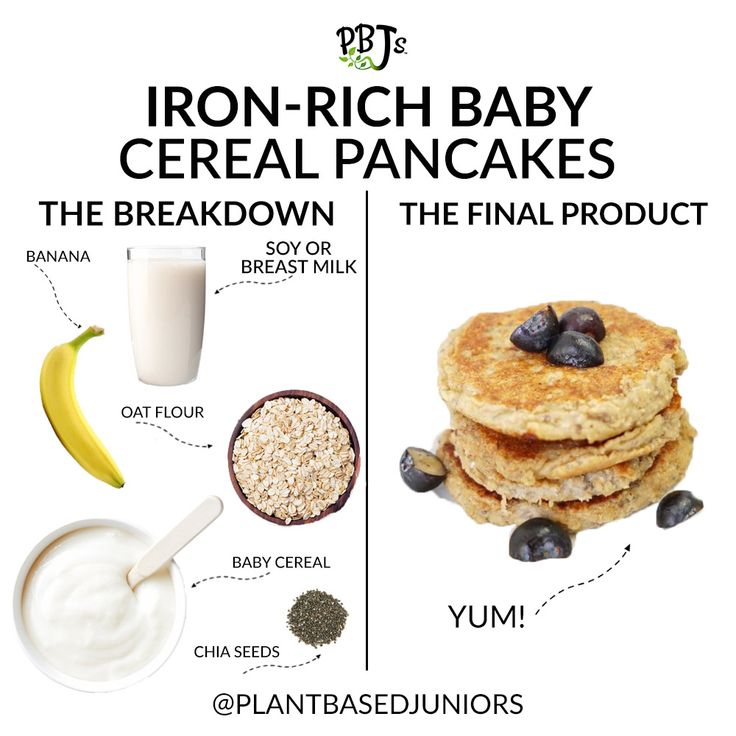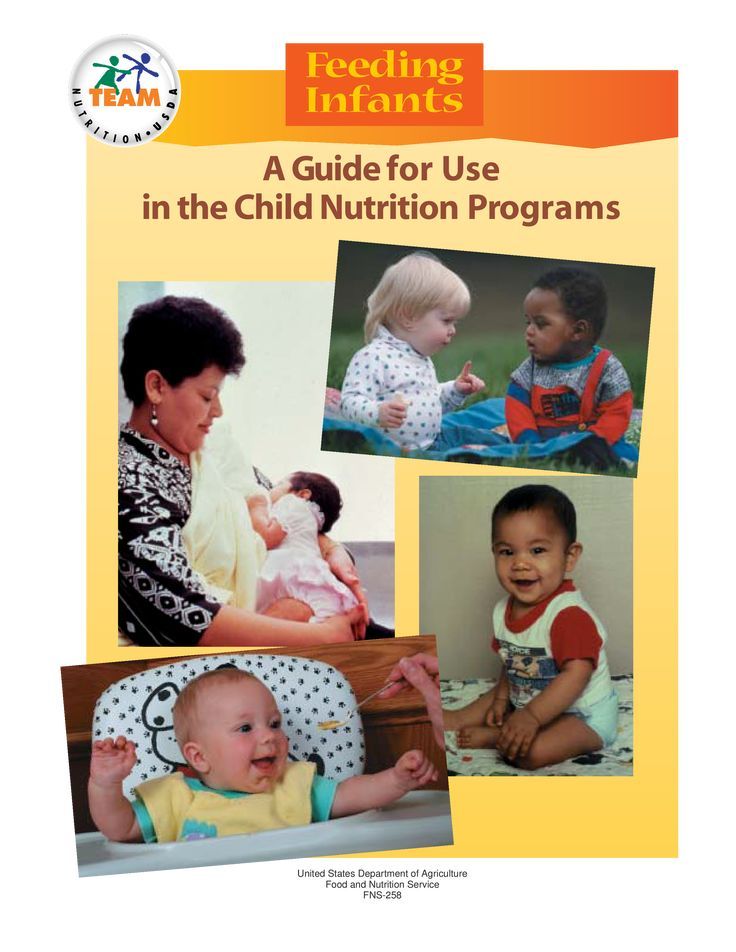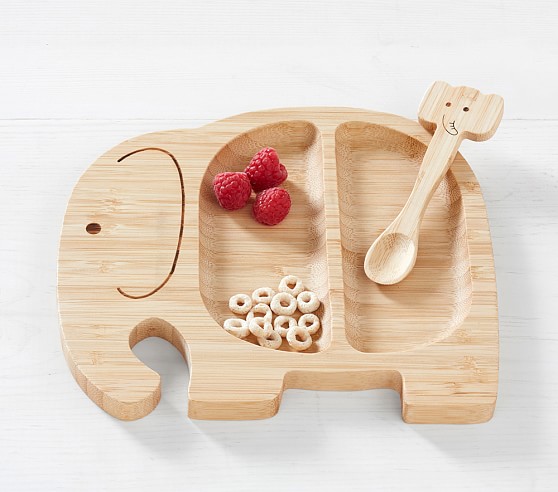Baby wanting to feed every hour
What To Do When Baby Is Feeding Every Hour (& Not Sleeping!)
What's in this post...
Is your baby feeding every hour and not napping or sleeping well? Here’s how you can handle when your little one nurses nonstop.
First let me say, mama, that the newborn period can be rough.
You feel like you were a normal human just a few short weeks ago and now, well, you’re a walking milk producer and baby just won’t settle.
You’re exhausted, weary, and ready for your newborn to sleep.
➡️ The good news is this: with a few tweaks you can stop feeding every hour.
Here’s why your baby feeds every hour
If your baby feeds every hour, they are “snacking.”
Snacking means they are drinking enough fore milk (the less nutrient dense milk that lets down first) that they are filled up enough to doze off in mama’s arms.
Or, some babies, will stop feeding after a few minutes and just stare up at you with those Big Newborn Eyes👼.
Either case… baby is snacking instead of taking a full feed.
Read These While You’re At It
How to get your baby to stop feeding every hour
If you want your baby to take full feeds, the first thing you need to do is get them on a proper newborn breastfeeding schedule.
You aren’t going to become a slave to the clock, but you’re going to stop the snacking.
Instead of cluster feeding on purpose, right now, you’re cluster feeding by accident.
How do you do that?By only feeding baby every 2.5 to 3 hours and then, at those feeds, giving baby full feeds.
Newborns will naturally only need to feed every 2.5 to 3 hours if they’re taking full feeds each time.
If your baby has a habit of snacking, they will not be the ones to stop it, you’ll have to.
Newborn Feeding Chart
Use this simple printable chart to track your feeds to make sure baby is fed, your supply is up, and everyone is well.
Here’s how to keep baby awake during breastfeeding
When baby feeds for 5 minutes then nods off, you’ll need to swoop in and keep baby awake.
This will help baby get as much milk in as possible and will help them to take better naps.
- Rub baby’s cheek
- Rub baby’s hands or feet in circular motions
- Unswaddle baby (a must if you want to avoid day night confusion)
- Use a wipe or wet wash cloth to rub on baby during feeds
- Stop feeding and hold baby up, speaking to baby
- Take baby outside or somewhere that’s a change of scenery
- Make noise, get near siblings, talk to baby
- Keep the lights on
Read: Is Sleep Training a Baby Bad or Dangerous? Let’s Talk Facts!
The reason baby doesn’t sleep well when they feed every hour
Your little one will likely not take good daytime naps if they are not taking full feeds.
They aren’t full enough to stay drowsy and asleep as they transition sleep cycles.
When they transition from active to passive sleep (or vice versa) if they aren’t full and are hungry, instead of just continuing the nap, they’ll become fully alert and ready to feed.
And then, because they only took a short nap, when you feed again for 5 to 10 minutes, they’ll be lulled back into a sleep.
➡️ Continuing the cycle of accidental cluster feeding and an overtired baby.
Related Reads:
- The Biggest Baby Sleep Myth That Backfires Every Time (And Makes Over Tired Babies)
- The Ultimate Guide To Baby Sleep Times (Naps & Bedtime)
How to stop the cycle and get on a good routine
The first thing you need to do is to stop baby from snacking every hour.
Encourage full feeds.
If baby is older than 6 weeks and wants to feed after one hour, consider offering a pacifier (we use these stuffed animal ones) instead.
This may help baby get back to sleep for a longer nap, and will mean the next time you feed baby will be hungry enough to eat a full feed.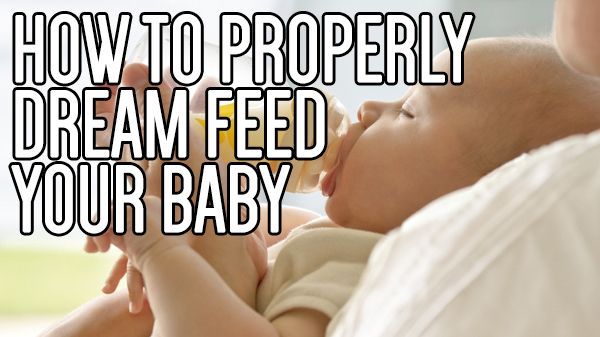
Do the best you can.
Baby has been in the snacking habit and may resist the change, but eventually you’ll see that you have a far less whiny baby on your hands when they have full tummies and are well rested.
Read: 8 Reasons You’ve Got A Whiny Baby And What To Do About It
Sleep Little Lamb
Create sustainable sleep habits for your little lamb so the whole family can sleep peacefully without the stress, drama, and tears.
Learn More
How to get your newborn to nap better
After you make sure that baby has full feeds, you’ll want to work on the napping…
I encourage you to read my full post on baby sleep here – Foolproof Baby Sleep Tips — Routines, Habits & Strategies.
@amotherfarfromhome Follow for more tips like this one! #newmommas #momstrugglesbelike #tipsformom #mommingit #sahmom #parentcoach #mommingallday #newbornbabytips ♬ Sunroof – Nicky Youre & dazy
Here is how to approach napping with your baby:
- Newborns should only be awake for around 45 to 90 minutes at a time (including feeding!) so your newborn routine and your newborn sleep schedule should have a nap after every single feed.
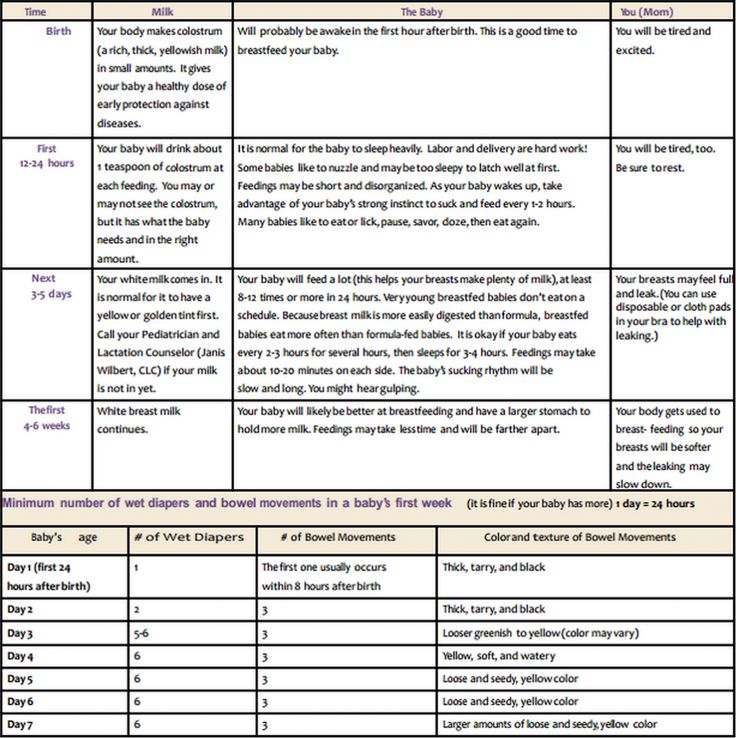
- Don’t rock baby to sleep in your arms and then try to put him in the crib because when he transitions through the sleep cycles he’ll realize he’s not in your arms… and he’ll wake up early.
Read: The Top 10 Indicators It’s Time to Sleep Train
- Establish a basic routine with your baby. You can follow this newborn routine here or modify it slightly.
- Put your baby to sleep drowsy but awake.
- Establish some wind down routines for your little one prior to nap.
- Focus on cluster feeding in the late evening hours which will help baby top up and sleep better throughout the night.
- Identify any sleep props your baby has (things that prevent him from transitioning and sleeping well on his own) and replace those with sleep associations.
28 Things To Do If Baby Won’t Sleep CHECKLIST
Here’s a handy dandy list of 28 things to try so baby will stop fighting sleep and sleep longer and later.
Recap and FAQ… How to get baby to stop feeding every hour and start sleeping
Why does my baby feed every hour?
Short answer… because you let him. Encourage baby to take full feeds and then baby won’t need to feed sooner than 2.5 or 3 hours between feeds throughout the day.
Perhaps even less at night.
Is ten minutes a full feed?
Probably not.
If baby will feed for ten minutes then nap and wake up to feed around 2.5 hours later, it might be.
My daughter fed no longer than 15 minutes per feed, but she could go 3 hours between feeds so, for her, it was a full feed.
Why does my baby want to breastfeed constantly?
If your baby wants to feed constantly, but never feeds that much, then it’s likely an association between feeding and comfort.
You can create other positive associations by cuddling, singing, rocking, baby massage, and other things that will help you to feel bonded to baby (so you can enjoy baby now!) but not be open for milk business all day.
Is feeding every hour cluster feeding?
Yes and no.
Cluster feeding is generally something a breastfeeding mother does on purpose in the late afternoon early evening period (feeding every 2 hours, say) to help give baby all the nutrients he needs so he will sleep later and longer.
Feeding every hour is more like an accidental cluster feeding and if baby isn’t having full feeds then it’s more like Comfort Nursing, not cluster feeding.
About those growth spurts…
Do babies feed every hour when they are going through a growth spurt?
If your baby is going through a growth spurt they will want to feed more often.
This helps your milk supply increase. It’s how you can know if baby is getting enough milk.
If baby is feeding every hour two and taking these feeds seriously – full feeds – then it’s likely a growth spurt or milk supply issue.
Or if baby is trying to feed every hour or two and only feeding for five minutes here or there, it’s not likely a growth spurt.
Why does my baby nurse for 5 minutes and then cry?
This could be a number of things.
Baby could have reflux or you could have hyper-lactation.
Baby could have uncomfortable gas.
Or baby could have a food sensitivity to something you’ve eaten. If this persists past a few days, I’d go in to the doctor and rule out the above causes.
Newborn Feeding Chart
Use this simple printable chart to track your feeds to make sure baby is fed, your supply is up, and everyone is well.
Milk supply?
Why does my baby always seem hungry and never satisfied?
This could be your milk supply. Here’s how to know if baby is getting enough milk.
Could be that baby is going through a growth spurt which means baby is more hungry.
Baby might be teething and eating is not comfortable so he’s not feeding well and in pain. Try pain management for babies who are going through teething.
Why is my newborn feeding for hours on end?
Short answer: they don’t.
They may stay at the breast for a long time, but that doesn’t mean they are actively feeding.
If your baby will take a pacifier you’ll see that they will also suck at the pacifier while sleeping.
Encourage your baby to be awake for feeds and then, after 30 to 45 minutes, take baby off the breast and let them take a nap in their own crib.
Sources:
- The importance of schedules and routines
- Routines minimize chaos which promotes resilience and regulation
- Routines indicators of predictable family life contributing to childhood development
::
A Surprising Cause (And How To Help Baby Sleep)
What's in this post...
Did you know there’s something else that could be causing reflux type symptoms that ISN’T reflux? Reflux babies have trouble sleeping, but these tips help.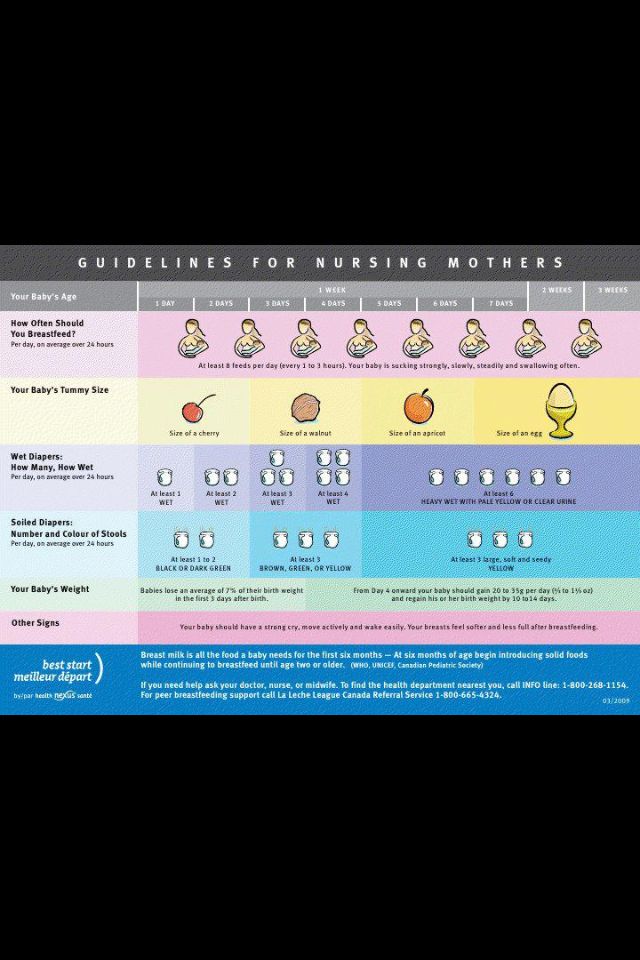
Babies with reflux have a hard time sleeping.
The End.
Okay, it’s not that hopeless. But it is hard.
Baby is uncomfortable and baby doesn’t find it easy to go to sleep if they are uncomfortable. Reflux causes pain in baby’s tummy, throat, and mouth and then can be woken up from sleep easier.
Gas often accompanies reflux and it can seem like a negative cycle.
Baby is uncomfortable. ➡️ Baby won’t sleep. ➡️ Baby is tired so doesn’t feed well. ➡️ Baby is hungry, overtired, and not resting or feeding well. ➡️ Baby is uncomfortable.
Our Story With Sleep And Baby Reflux…. Or Was It?
I’ll not soon forget the first round of baby vomiting.
My second born son would feed, feed, feed, then he’d throw up, have gas, and have trouble sleeping. I knew it takes some time for baby to “figure out how to feed.” So, I let the symptoms slide for a few weeks before mentioning them to my midwife.
Maybe I was doing something wrong, I thought.
Turns out, I
was and I wasn’t.The doctor saw my son had reflux symptoms and prescribed some medicine for us. We lived near Sydney at the time and were planning a trip to the States, so I dutifully had it filled as part of our trip preparation.
I was a new mom and didn’t do enough research. Plus, I was frazzled traveling overseas with two babies 1 year and younger. I forgot to get the flight attendants to refrigerate the medicine.
By the time we landed, the medicine had turned a brownish color that signified it would no longer work.
I needed a new plan
My baby was around 2 months old and I’d had reflux medicine for about three days now it was gone. I was desperate to figure out the root cause of this, not just treat his symptoms. I started watching for what was happening while I was feeding.
It was going to be a few days until I could get him into a doctor here anyway.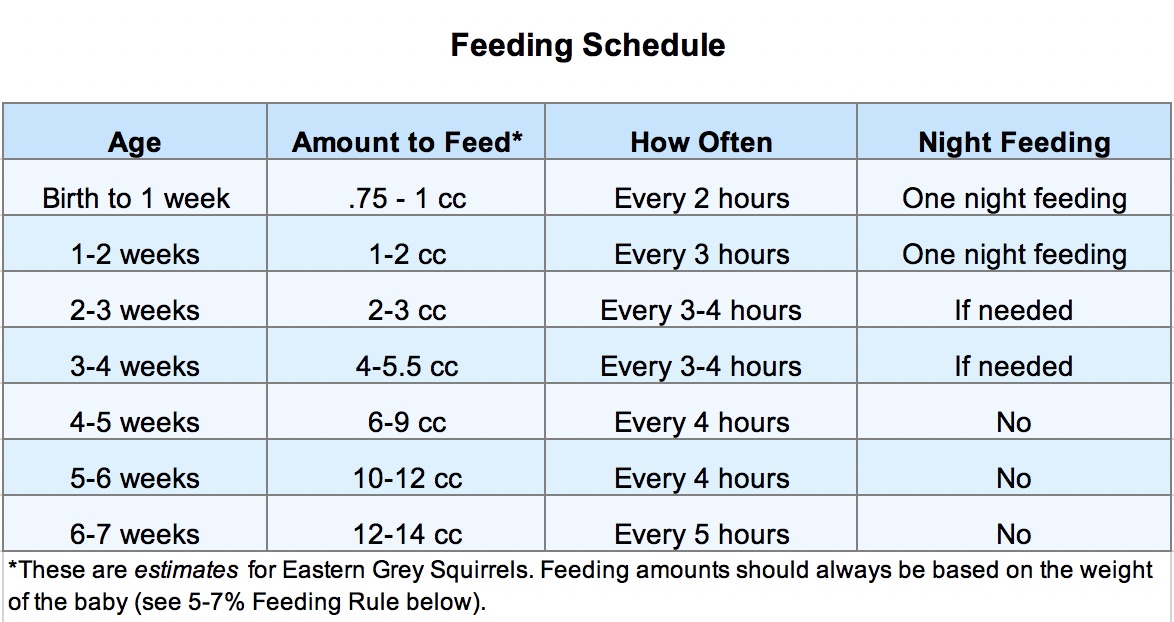
Then, I noticed something interesting happening while I was feeding.
Baby seemed to be choking on the milk.
In fact, the milk was coming out so fast that he barely had time to swallow before it went down his throat, into his tummy, and out into his diaper.
The midwife had actually told me that a lot of the milk was undigested in his diaper because it was in and out so fast.
Why?Hyper-lactation.
One possible cause (certainly not all, consult your doctor and follow their recommendations) of reflux like symptoms is hyper-lactation. I found this term after tons of Googling, #thankyouverymuchGoogle.
Psst… you can track things like this using our daily baby logs.
Hyper-lactation essentially means mothers make more milk than strictly necessary for their baby. It often causes a very fast and aggressive letdown where milk comes out without much work on the baby’s part and it can often be painful for the mother.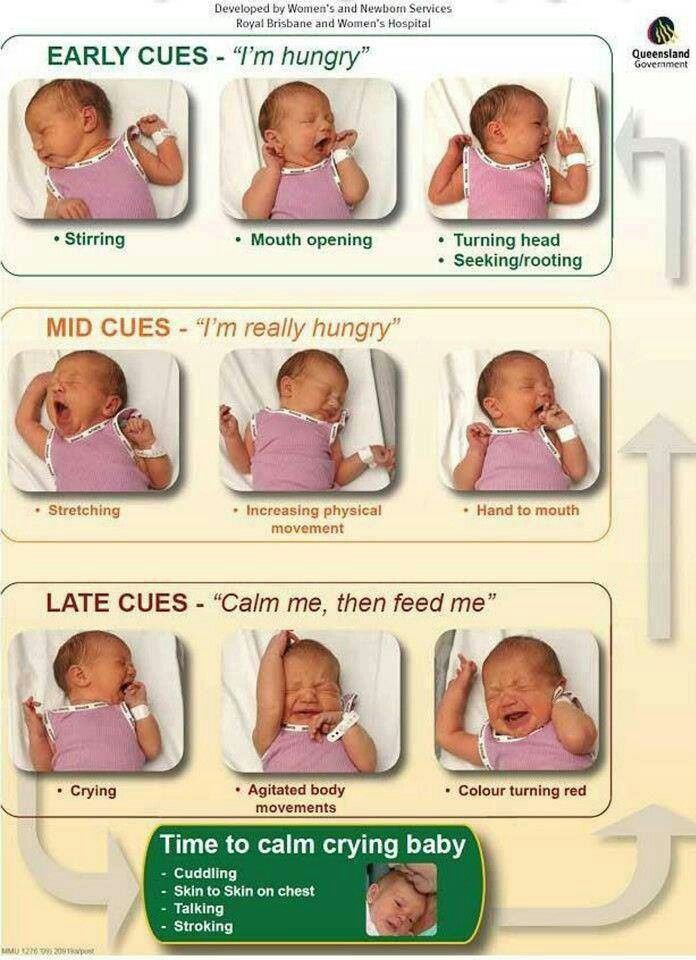
There can be a lot of engorgement and a foremilk / hindmilk imbalance that results in fussiness, gas, and reflux like symptoms in infants.
Once I was able to realize that hyper-lactation was the cause of the reflux like symptoms, I could do a few things during feeding that would help ease his symptoms.
Read: 12 Medical Reasons Why Your Baby’s Not Sleeping (With Symptoms of Each)
Baby is uncomfortable and baby doesn’t find it easy to go to sleep if they are uncomfortable. Reflux causes pain in baby’s tummy, throat, and mouth and then can be woken up from sleep easier.
Baby is uncomfortable and baby doesn’t find it easy to go to sleep if they are uncomfortable. Reflux causes pain in baby’s tummy, throat, and mouth and then can be woken up from sleep easier.
Read: The Top 10 Indicators It’s Time to Sleep Train
28 Things To Do If Baby Won’t Sleep CHECKLIST
Here’s a handy dandy list of 28 things to try so baby will stop fighting sleep and sleep longer and later.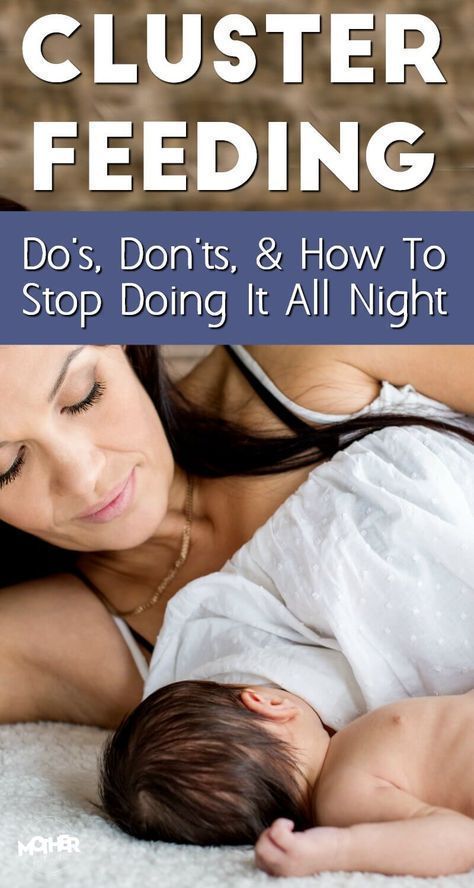
Tips For Feeding If You Suspect You’re Experiencing Hyper-Lactation
- When you are feeding and let down occurs, take the baby off for a bit and express (into a pump or nursing pad, etc.) and then put baby back on. This will “lessen the pressure.”
- Change position while feeding. Lie down or lay back and have baby on your chest so baby has to “work harder” to get the milk and gravity isn’t helping the milk come out at a faster than necessary rate.
- Nurse from one side at a time. If both sides have an aggressive letdown and you give baby both then they’re twice as likely to experience reflux symptoms. Instead, feed from one side fully for a long time. They’ll still get all the hindmilk rich in nutrients and have less foremilk.
- Wait until 3 months or so to do something drastic. After this time, witching hours should also be a thing of the past which will help you tease out the issue.
I had hyper-lactation with 3 of my babies and by 3 months or so all had evened out.
Read: Is Sleep Training a Baby Bad or Dangerous? Let’s Talk Facts!
But wait… how do you help babies with reflux sleep?
So with at least 3 babies who had reflux like symptoms, I learned a few things. The best you can do is to make super baby is well fed, help minimize their pain or discomfort, and create the right conditions for sleep.
But you can’t make baby sleep.
Truthfully, all my babies slept well because it was something I focused on.
When you focus on something you see results.
But it wasn’t without some struggle and – it goes without saying – comforting baby is always paramount.
Sometimes when baby is in pain it is the comfort of mom that will help him sleep. So I kept that in mind when I wanted them to sleep, but they wanted to be held or sat upright.
Read: Cocooning a Newborn & 7 Reasons Why it Can Be Good For The Family
Put The Crib At An Incline
Whether baby is sleeping in a crib or in a bassinet or wherever else, put the mattress at a safe incline that will help prevent some of the reflux from coming up.
Same reason why older folks will sleep sitting up in a recliner (or why you did it while pregnant!) because gravity keeps the stomach acids down.
As long as the incline is not too steep that baby will tend to slide down it, then this will help position baby on his back with a better chance of getting to sleep comfortably.
We also have used towels or blankets under the mattress to achieve the same effect.
Baby Sleep Cards & Checklists
These lovely cards and checklists will help you create and keep healthy wind down and sleep routines for your little ones.
Learn More
Burp, Burp, Burp If Baby Has Reflux
I don’t know about you, but burping ain’t as easy as you think it will be. It doesn’t always result in a burp.
When I was in the throes of hyper-lactation I always made sure to burp for as long as it reasonably took until I felt sure baby wouldn’t have gas.
I knew if I’d missed one because at the 45 minute mark baby would wake up from a nap crying in pain. I’d often go to the crib and lift the baby and – as I did so – the baby would burp.
If baby goes to sleep and wakes after 45 minutes crying, there are usually two culprits.
- Baby has trouble transitioning through sleep cycles from passive to active (or vice versa) sleep. If baby has reflux it could be that while trying to transition they felt pain, gas or otherwise, and woke up.
- Baby has gas and wakes up crying. This type of cry is usually more one of pain or distress than the cry from #1 and you’ll know this was the case if you pick baby up and he or she burps quickly.
How to avoid this? More frequent burping throughout the feeding then really working to burp baby well before putting them down to rest.
Hold Baby Upright Before Naps
Another thing you can do is after feeding, burping, changing diapers, and before you put baby down to rest….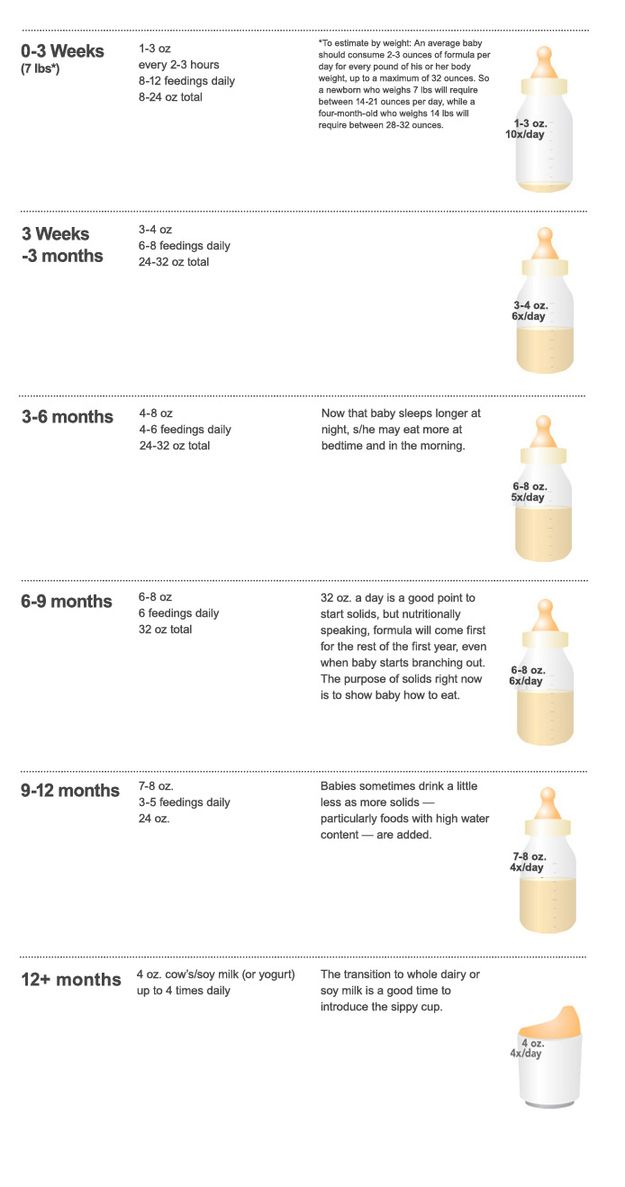 hold baby upright.
hold baby upright.
This may be upright on your chest, in an infant seat, on your lap or however else, but the key is to have the baby upright so that the discomfort from reflux type symptoms are minimized. According to Healthline…
“A horizontal position makes it easier for the stomach contents to reflux into the esophagus. The undeveloped digestive system is the reason why all babies are prone to experience acid reflux symptoms. “
The longer you keep baby in the horizontal position the better to minimize reflux discomfort for your little one.
Read: How to Stop Contact Naps (Peacefully)- and What to Do Instead
Ultimately, reflux is something that passes in most babies (though not all) around the time they begin sitting up for this very reason, so if you can hold baby upright pre-feeding then it will make a big difference.
Get Medicine If Necessary
Of course, if your baby is exhibiting signs of reflux I hope you’ve already taken them to the doctor and then followed the recommendations you were given.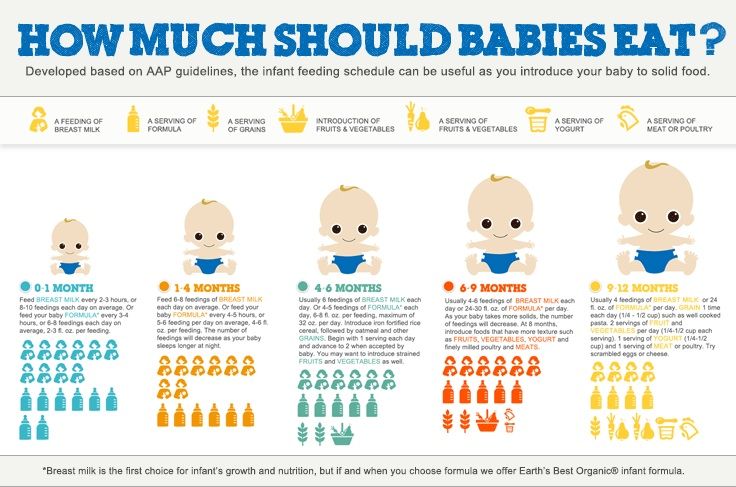
We are in an unprecedented time where the pendulum swung from enthusiasm for all medicines last century (vaccines! pills!) to a near current disdain for medicine.
Obviously we don’t want to over-medicate our kids when it isn’t necessary, but don’t be afraid to try what’s on the market if it’ll bring relief to your little one.
Comfort Baby And Know It Will Pass
Sleep Training Checklist
Ready for everyone to start sleeping better? Use this checklist to help you get there.
By 1 year of age, most babies will grow out of reflux.
This is because up to this point the baby’s esophagus is not fully formed. At around one year of age the esophageal sphincter muscle is more fully developed and will stop allowing the stomach contents back up into the esophagus.
While some continue to have reflux or GERD symptoms into toddlerhood, most do not.
Sleep Little Lamb
Create sustainable sleep habits for your little lamb so the whole family can sleep peacefully without the stress, drama, and tears.
Learn More
So what does this mean ?It means the following…
- Comfort a baby who is in pain. Even if you are creating sleep props you’ll have to break later, a baby who is in pain isn’t going to sleep without some help anyway.
- Try and avoid overtiredness. It’s a myth that wearing baby out will make him sleep better. It’ll do the opposite.
- Set the stage for sleep. Use positive sleep associations, baby bedtime routines, and wind down routines to help baby get into the mood to sleep. Most will. Not all the time, but much of the time.
- Follow all The Things. Do all that the experts say to do to help relieve baby’s pain, including the gripe water and medication and watching your own diet for foods that contribute to reflux. Then… if baby won’t sleep… comfort baby.
As someone wise and a bit funny once said…
“This too shall pass… it may pass like a kidney stone, but it’ll pass.
”
::
The child should not | Medical Center
At the moment, services are being re-evaluated, please check with the administrator by phone for details and exact prices. Thanks for understanding!
Medical Center
8(495)741-10-01
Alekseevskaya metro station, Prospekt Mira, 102, building 23
Paveletskaya metro station, 3rd Monetchikovsky pereulok, 16, building 1
daily
08:00 - 20:00
Personal account
Show on map
Pediatrician Anastasia Turchinskaya as a lawyer for babies.
The child should NOT:
- sleep through the night. Night feedings are an important part of the diet. It is absolutely normal that the baby asks for food at night every three, two, or even half an hour. Attach the baby to the chest, especially since more prolactin and oxytocin are produced at night - hormones that provide breastfeeding.
- to be in the crib, not in the arms.
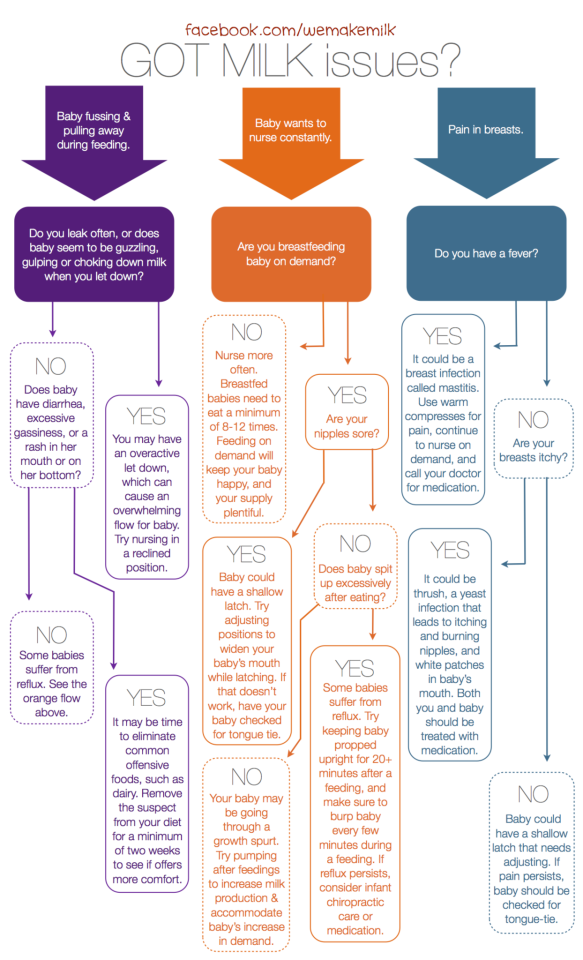 Wanting to be held is a normal desire of a child! The instinct that allowed mankind to survive. And although we now do not live in caves and there are no saber-toothed tigers around us, the need to be in the hands of an adult is still basic! So the child is calm, and, therefore, can explore the world, grow and develop. nine0026
Wanting to be held is a normal desire of a child! The instinct that allowed mankind to survive. And although we now do not live in caves and there are no saber-toothed tigers around us, the need to be in the hands of an adult is still basic! So the child is calm, and, therefore, can explore the world, grow and develop. nine0026 - is on schedule. The best diet for babies - on demand. The volume of the stomach of the newborn is small. It is normal that the child asks for food every 2 hours, even every half an hour! Breastfeed your baby every time he wants to.
- poop once a day with yellow poop. The child's stool for breastfeeding can be both every time after feeding, and every few days. Stool color is not permanent and changing from yellow to brown to green is normal! The main guideline is weight gain and good health. nine0026
- be convenient. Children of the first year of life are very demanding. They need parents around the clock.
 Postpone all things to an older age, devote your attention and time to the child.
Postpone all things to an older age, devote your attention and time to the child. - always be healthy. Snot, cough, diarrhea, fever and other manifestations of SARS not only can, but should be in all children! When sick, the child builds up his immunity. Yes, the disease is scary and unpleasant, but it's normal!
- don't cry. In the first months, the only way a child communicates with the world is crying. Soon you will learn to recognize by "intonation" what exactly the baby wants, but for now, take him in your arms and attach him to your chest. nine0026
- be predictable. Each child grows and develops according to his own norms, rarely when they coincide with tables and textbooks.
We agree that it is difficult for young parents to notice a developmental disorder. Therefore, our pediatricians are always in touch and ready to help with professional advice!
Author:
Turchinskaya Anastasia
Below are the appointment days and hours of the specialist.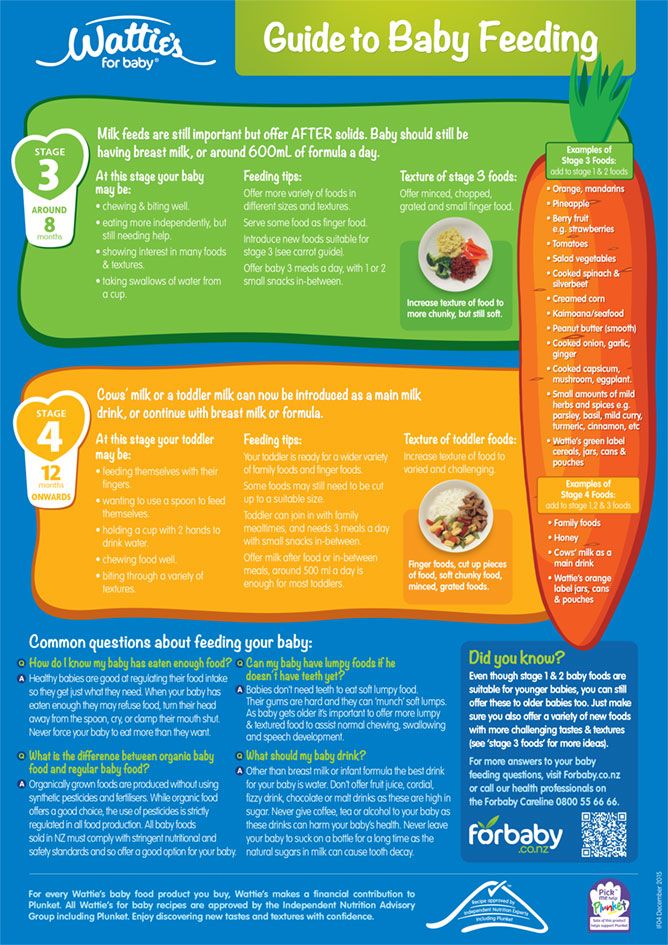 After you leave a request, we will contact you to clarify the record. nine0003
After you leave a request, we will contact you to clarify the record. nine0003
time8:008:309:009:3010:0010:3011:0011:3012:0012:3013:0013:3014:0014:3015:0015:3016:0016:3017:0017:3018:0018:3019:0019: 30
I agree to the processing of personal data *
Breastfeeding in the first month: what to expect
Not sure how to establish lactation and increase milk production? If you need help, support, or just want to know what to expect, read our first month breastfeeding advice
Share this information nine0003
The first few weeks of breastfeeding are stressful. If at times you feel like you can't handle it, know that you are not alone. Feeding your baby all day long is completely natural and helps produce breast milk, but can be quite tiring at times. Be patient, think about yourself and remember: after the first month, when milk production stabilizes, it will become easier.
How often should a baby be breastfed?
Babies are born with a small stomach that grows rapidly as milk production increases: in the first week it is no larger than an apricot, and after two weeks it is already the size of a large hen's egg. nine0095 1.2 Let the child eat as much as he wants and when he wants. This will help him quickly regain the weight lost after birth and grow and develop further.
nine0095 1.2 Let the child eat as much as he wants and when he wants. This will help him quickly regain the weight lost after birth and grow and develop further.
“Be prepared to feed every two to three hours throughout the day. At night, the intervals between feedings can be longer: three to four or even five hours, says Cathy Garbin, a recognized international expert on breastfeeding. Some eat quickly and are satiated in 15 minutes, while others take an entire hour to feed. Do not compare your breastfeeding regimen with that of other mothers - it is very likely that there will be nothing in common between them. nine0003
At each feed, give your baby a full meal from one breast and then offer a second one, but don't worry if the baby doesn't take it. When the baby is full, he lets go of his chest and at the same time looks relaxed and satisfied - so much so that he can immediately fall asleep. The next time you feed, start on the other breast. You can monitor the order of the mammary glands during feeding using a special application.
Why does the child always ask for a breast?
The first month is usually the hardest time to breastfeed. But do not think that because the baby is constantly hungry and asks for a breast almost every 45 minutes, then you do not have enough milk. nine0003
In the first month, the baby needs to eat frequently to start and stimulate the mother's milk production. It lays the foundation for a stable milk supply in the future. 3
In addition, we must not forget that the child needs almost constant contact with the mother. The bright light and noise of the surrounding world at first frighten the baby, and only by clinging to his mother, he can calm down.
Sarah, mother of three from the UK, confirms: “Crying is not always a sign of hunger. Sometimes my kids just wanted me to be around and begged for breasts to calm them down. Use a sling. Place the cradle next to the bed. Don't look at the clock. Take advantage of every opportunity to relax. Forget about cleaning. Let those around you take care of you. And not three days, but six weeks at least! Hug your baby, enjoy the comfort - and trust your body." nine0003
Let those around you take care of you. And not three days, but six weeks at least! Hug your baby, enjoy the comfort - and trust your body." nine0003
Do I need to feed my baby on a schedule?
Your baby is still too young for a strict daily routine, so
forget about breastfeeding schedules and focus on his needs.
“Volumes have been written about how to feed a baby on a schedule, but babies don't read or understand books,” Cathy says. - All children are different. Some people can eat on a schedule, but most can't. Most often, over time, the child develops his own schedule.
Some mothers report that their babies are fine with scheduled feedings, but they are probably just the few babies who would eat every four hours anyway. Adults rarely eat and drink the same foods at the same time of day - so why do we expect this from toddlers?
Offer your baby the breast at the first sign of hunger. Crying is already the last stage, so be attentive to early signs: the baby licks his lips, opens his mouth, sucks his fist, turns his head with his mouth open - looking for the breast. nine0095 4
nine0095 4
What is a “milk flush”?
At the beginning of each feed, a hungry baby actively suckles the nipple,
thereby stimulating the milk flow reflex - the movement of milk through the milk ducts. 5
“Nipple stimulation triggers the release of the hormone oxytocin,” Cathy explains. “Oxytocin is distributed throughout the body and causes the muscles around the milk-producing glands to contract and the milk ducts to dilate. This stimulates the flow of milk. nine0003
If the flushing reflex fails, milk will not come out. This is a hormonal response, and under stress it may not work at all or work poorly. Therefore, it is so important that you feel comfortable and calm when feeding.
“Studies show that each mother has a different rhythm of hot flashes during one feed,” Kathy continues, “Oxytocin is a short-acting hormone, it breaks down in just 30-40 seconds after formation. Milk begins to flow, the baby eats, the effect of oxytocin ends, but then a new rush of milk occurs, the baby continues to suckle the breast, and this process is repeated cyclically.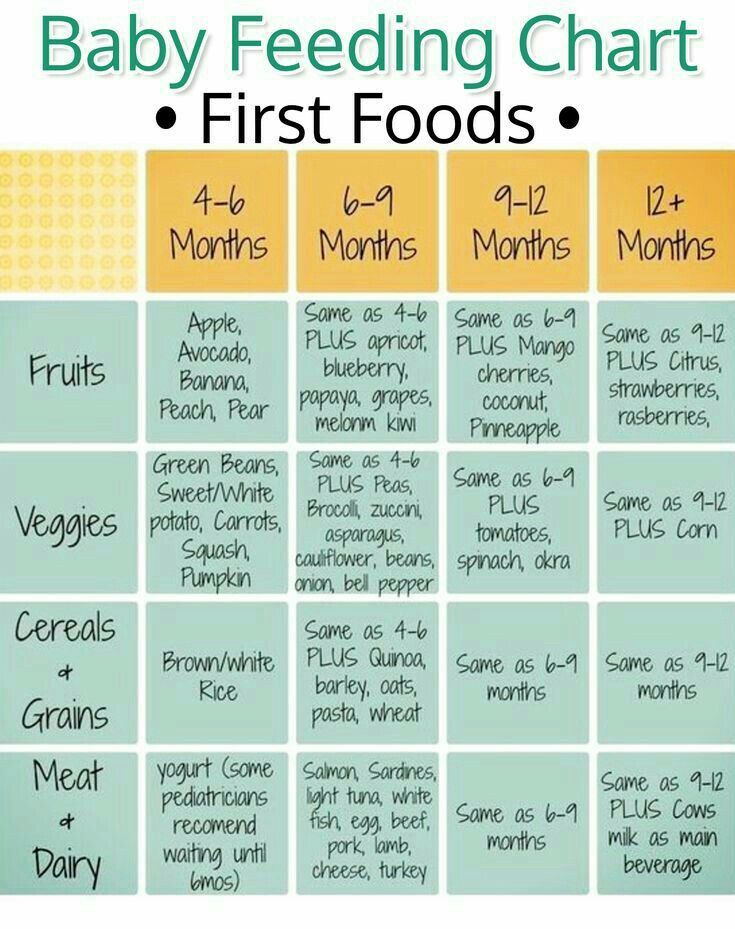 That is why, during feeding, the child periodically stops and rests - this is how nature intended. nine0003
That is why, during feeding, the child periodically stops and rests - this is how nature intended. nine0003
The flow of milk may be accompanied by a strong sensation of movement or tingling in the chest, although 21% of mothers, according to surveys, do not feel anything at all. 5 Cathy explains: “Many women only feel the first rush of milk. If you do not feel hot flashes, do not worry: since the child eats normally, most likely, you simply do not understand that they are.
How do you know if a baby is getting enough milk?
Since it is impossible to track how much milk a baby eats while breastfeeding, mothers sometimes worry that the baby is malnourished. Trust your child and your body. nine0003
After a rush of milk, the baby usually begins to suckle more slowly. Some mothers clearly hear how the baby swallows, others do not notice it. But one way or another, the child himself will show when he is full - just watch carefully. Many babies make two or three approaches to the breast at one feeding. 6
6
“When a child has had enough, it is noticeable almost immediately: a kind of “milk intoxication” sets in. The baby is relaxed and makes it clear with his whole body that he is completely full, says Katie, “Diapers are another great way to assess whether the baby is getting enough milk. During this period, a breastfed baby should have at least five wet diapers a day and at least two portions of soft yellow stool, and often more.” nine0003
From one month until weaning at six months of age, a baby's stool (if exclusively breastfed) should look the same every day: yellow, grainy, loose, and watery.
When is the child's birth weight restored?
Most newborns lose weight in the first few days of life. This is normal and should not be cause for concern. As a rule, weight is reduced by 5-7%, although some may lose up to 10%. One way or another, by 10–14 days, almost all newborns regain their birth weight. In the first three to four months, the minimum expected weight gain is an average of 150 grams per week. But one week the child may gain weight faster, and the next slower, so it is necessary that the attending physician monitor the health and growth of the baby constantly. nine0095 7.8
But one week the child may gain weight faster, and the next slower, so it is necessary that the attending physician monitor the health and growth of the baby constantly. nine0095 7.8
At the slightest doubt or signs of dehydration, such as
dark urine, no stool for more than 24 hours, retraction of the fontanel (soft spot on the head), yellowing of the skin, drowsiness, lethargy, lack of appetite (ability to four to six hours without feeding), you should immediately consult a doctor. 7
What is “cluster feeding”?
When a baby asks for a breast very often for several hours, this is called cluster feeding. nine0095 6 The peak often occurs in the evening between 18:00 and 22:00, just when many babies are especially restless and need close contact with their mother. Most often, mothers complain about this in the period from two to nine weeks after childbirth. This is perfectly normal and common behavior as long as the baby is otherwise healthy, eating well, gaining weight normally, and appears content throughout the day. 9
9
Cluster feeding can be caused by a sharp jump in the development of the body - during this period the baby especially needs love, comfort and a sense of security. The growing brain of a child is so excited that it can be difficult for him to turn off, or it just scares the baby. nine0095 9 If a child is overworked, it is often difficult for him or her to calm down on his own, and adult help is needed. And breastfeeding is the best way to calm the baby, because breast milk is not only food, but also pain reliever and a source of happiness hormones. 10
“No one told me about cluster feeding, so for the first 10 days I just went crazy with worry - I was sure that my milk was not enough for the baby,” recalls Camille, a mother from Australia, “It was a very difficult period . I was advised to pump and supplement until I finally contacted the Australian Breastfeeding Association. There they explained to me what was happening: it turned out that it was not about milk at all. nine0003
nine0003
Remember, this is temporary. Try to prepare dinner for yourself in the afternoon, when the baby is fast asleep, so that in the evening, when he begins to often breastfeed, you have the opportunity to quickly warm up the food and have a snack. If you are not alone, arrange to carry and rock the baby in turns so that you have the opportunity to rest. If you have no one to turn to for help and you feel that your strength is leaving you, put the baby in the crib and rest for a few minutes, and then pick it up again. nine0003
Ask your partner, family and friends to help you with household chores, cooking and caring for older children if you have any. If possible, hire an au pair. Get as much rest as possible, eat well and drink plenty of water.
“My daughter slept a lot during the day, but from 23:00 to 5:00 the cluster feeding period began, which was very tiring,” recalls Jenal, a mother from the USA, “My husband tried his best to make life easier for me - washed, cleaned, cooked, changed diapers, let me sleep at every opportunity and never tired of assuring me that we were doing well. nine0003
nine0003
If you are concerned about the frequency of breastfeeding, it is worth contacting a specialist. “Check with a lactation consultant or doctor to see if this is indicative of any problems,” recommends Cathy. “Resist the temptation to supplement your baby with formula (unless recommended by your doctor) until you find the cause. It may not be a matter of limited milk production at all - it may be that the child is inefficiently sucking it.
When will breastfeeding become easier?
This early stage is very special and does not last long. Although sometimes it seems that there will be no end to it, rest assured: it will get easier soon! By the end of the first month, breast milk production will stabilize, and the baby will become stronger and learn to suckle better. 2.3 Any problems with latch on by this time will most likely be resolved and the body will be able to produce milk more efficiently so inflammation and leakage of milk will start to subside.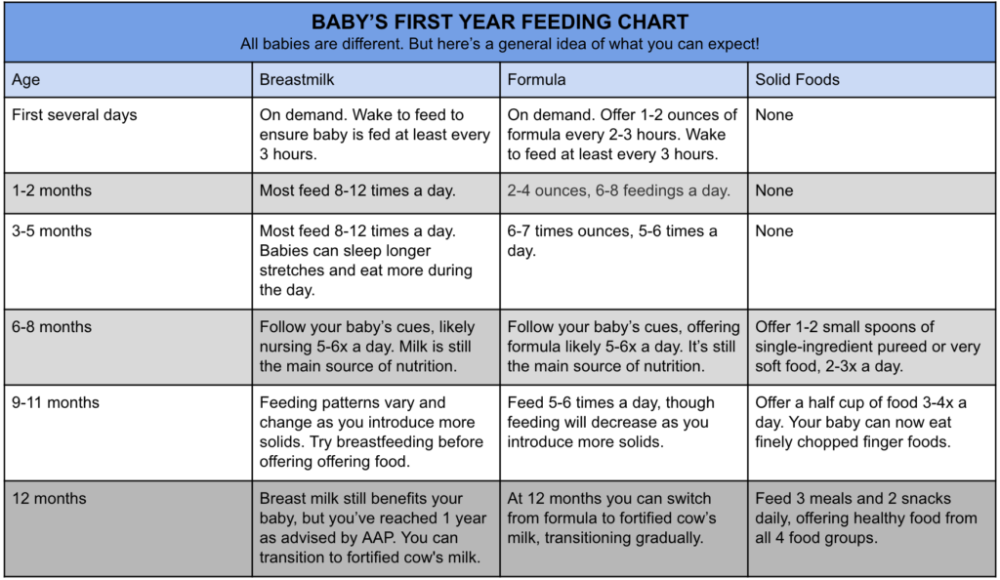 nine0003
nine0003
“The first four to six weeks are the hardest, but then things start to get better,” Cathy assures. It just needs to be experienced!”
The longer breastfeeding continues, the more benefits it brings, from saving on formula and improving sleep quality 11–13 to boosting your baby's immune system 14 and reducing your risk of developing certain types of cancer. nine0095 15
“When you feel like you're pushing yourself, try to go from feed to feed and day to day,” advises Hannah, a UK mom. “I was sure I wouldn’t make it to eight weeks. And now I have been breastfeeding for almost 17 weeks, and I dare say it is very easy.”
Read the resource Breastfeeding After the First Month: What to Expect
Readings
1 Naveed M et al. An autopsy study of relationship between perinatal stomach capacity and birth weight. Indian J Gastroenterol .1992;11(4):156-158. - Navid M. et al., "Relationship between prenatal gastric volume and birth weight. Autopsy." Indian J Gastroenterol. 1992;11(4):156-158.
- Navid M. et al., "Relationship between prenatal gastric volume and birth weight. Autopsy." Indian J Gastroenterol. 1992;11(4):156-158.
2 Neville MC et al. Studies in human lactation: milk volumes in lactating women during the onset of lactation and full lactation. Am J Clinl Nutr 1988;48(6):1375-1386. - Neville M.S. et al., "Female Lactation Study: Milk Quantity in Lactating Women at the Beginning and Peak of Lactation." Am F Clean Nutr. 1988;48(6):1375-1386.
3 Kent JC et al. Principles for maintaining or increasing breast milk production. J Obstet , Gynecol , & Neonatal Nurs . 2012;41(1):114-121. - Kent J.S. et al., "Principles for Maintaining and Increasing Milk Production". J Obstet Ginecol Neoneutal Nurs. 2012;41(1):114-121.
4 Australian Breastfeeding Feeding cues ; 2017 Sep [ cited 2018 Feb ]. - Australian Breastfeeding Association [Internet], Feed Ready Signals; September 2017 [cited February 2018]
5 Kent JC et al. Response of breasts to different stimulation patterns of an electric breast pump. J Human Lact . 2003;19(2):179-186. - Kent J.S. et al., Breast Response to Different Types of Electric Breast Pump Stimulation. J Human Lact (Journal of the International Association of Lactation Consultants). 2003;19(2):179-186.
6) Kent JC et al . Volume and frequency of breastfeedings and fat content of breast milk throughout the day. Pediatrics. 2006;117(3): e 387-395. - Kent J.S. et al., "Amount and frequency of breastfeeding and fat content of breast milk during the day." Pediatrix (Pediatrics). 2006;117(3):e387-95.
Pediatrics. 2006;117(3): e 387-395. - Kent J.S. et al., "Amount and frequency of breastfeeding and fat content of breast milk during the day." Pediatrix (Pediatrics). 2006;117(3):e387-95.
7 Lawrence RA, Lawrence RM. Breastfeeding: A guide for the medical profession. 7th ed. Maryland Heights MO, USA: Elsevier Mosby; 2010. 1128 p . - Lawrence R.A., Lawrence R.M., "Breastfeeding: A guide for healthcare professionals." Seventh edition. Publisher Maryland Heights , Missouri, USA: Elsevier Mosby; 2010. P. 1128.
8 World Health Organization. [Internet]. Child growth standards; 2018 [cited 2018 Feb] - World Health Organization. [Internet]. Child Growth Standards 2018 [cited February 2018].
9 Australian Breast feeding Association .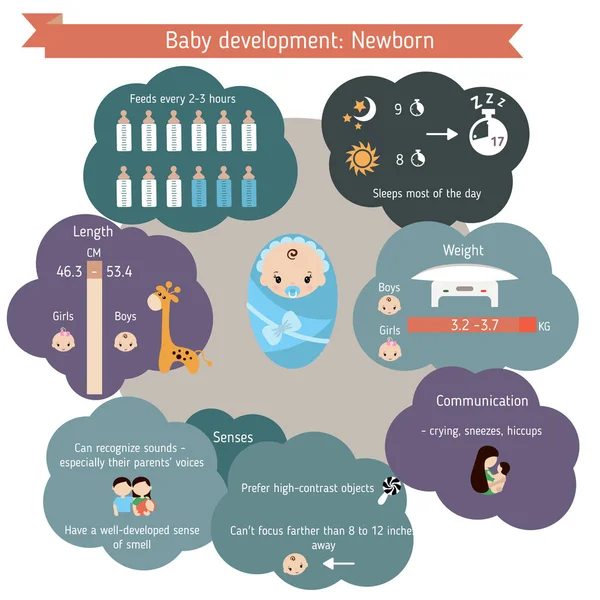 [ Internet ]. Cluster feeding and fussing babies ; Dec 2017 [ cited 2018 Feb ] - Australian Breastfeeding Association [Internet], Cluster Feeding and Screaming Babies; December 2017 [cited February 2018].
[ Internet ]. Cluster feeding and fussing babies ; Dec 2017 [ cited 2018 Feb ] - Australian Breastfeeding Association [Internet], Cluster Feeding and Screaming Babies; December 2017 [cited February 2018].
10 Moberg KU, Prime DK. Oxytocin effects in mothers and infants during breastfeeding. Infant . 2013;9(6):201-206.- Moberg K, Prime DK, "Oxytocin effects on mother and child during breastfeeding". Infant. 2013;9(6):201-206.
11 U.S. Department of Health & Human Services [Internet]. Surgeon General Breastfeeding factsheet; 2011 Jan 20 [cited 2017 Feb] - Department of Health and Human Services [Internet], "Breastfeeding Facts from the Chief Medical Officer", Jan 20, 2011 [cited Feb 2017]
12 Kendall-Tackett K et al. The effect of feeding method on sleep duration, maternal well-being, and postpartum depression. clinical lactation. 2011;1;2(2):22-26. - Kendall-Tuckett, K. et al., "Influence of feeding pattern on sleep duration, maternal well-being and the development of postpartum depression." Clinical Lactation. 2011;2(2):22-26.
clinical lactation. 2011;1;2(2):22-26. - Kendall-Tuckett, K. et al., "Influence of feeding pattern on sleep duration, maternal well-being and the development of postpartum depression." Clinical Lactation. 2011;2(2):22-26.
13 Brown A, Harries V. Infant sleep and night feeding patterns during later infancy: Association with breastfeeding frequency, daytime complementary food intake, and infant weight. Breast Med . 2015;10(5):246-252. - Brown A., Harris W., "Night feedings and infant sleep in the first year of life and their association with feeding frequency, daytime supplementation, and infant weight." Brest Med (Breastfeeding Medicine). 2015;10(5):246-252.
14 Hassiotou F et al. Maternal and infant infections stimulate a rapid leukocyte response in breastmilk. Clin Transl immunology. 2013;2(4). - Hassiot F. et al., "Infectious diseases of the mother and child stimulate a rapid leukocyte reaction in breast milk.


